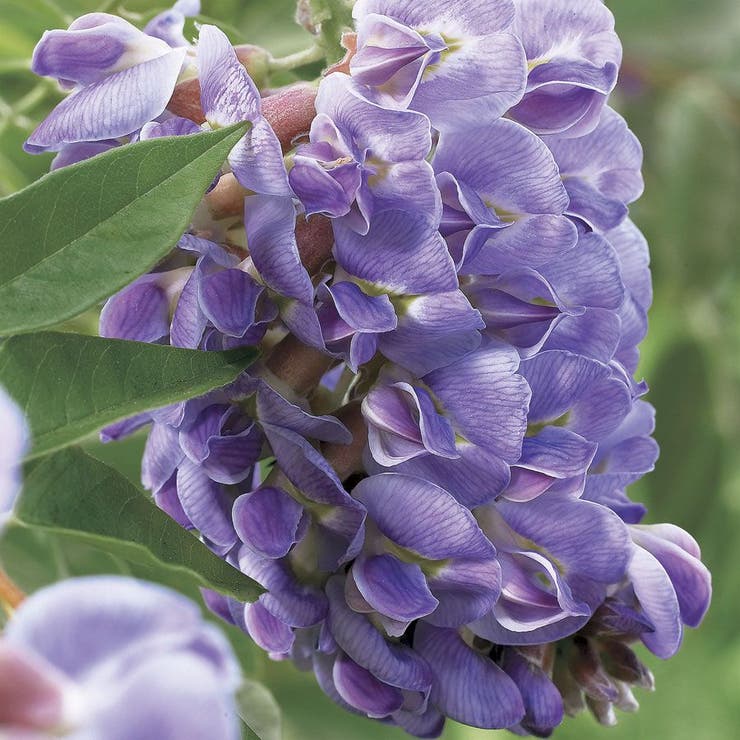Wisteria 'Amethyst Falls'

In stock
| Ships according to schedule- Buy 3 for $36.00 each and save 10%
Description / Wisteria 'Amethyst Falls'
Wisteria 'Amethyst Falls', like other wisteria, is a strong grower, reaching 30 feet or more. It is, however, not invasive like its Asian cousins. Wisteria 'Amethyst Falls', a native variety, is less vigorous and easier to manage, refraining from choking out trees over time, as some wisteria are wont to do - a distinct advantage in the South, where wisteria can run wild. All of these things make it an ecologically sensitive choice.
Wisteria 'Amethyst Falls' flowers sooner than the Asian types (some of which can take 10 years or more), blooming its first season with fragrant, vividly blue flowers on 4- to 6-inch racemes that appear in spring and repeat all summer. Its bloom also arrive about two weeks later than others, so late-winter frosts seldom affect flowering.
The many attributes of Wisteria 'Amethyst Falls', which include its deer and drought tolerance and its disease-resistant foliage, earned it a Georgia Gold Medal in 2006. This gorgeous vine is a perfect choice for pergolas, trellises, fences, arbors, and containers, attracting butterflies to your garden all summer long. It can also be trained as a free-standing tree - tie it to a sturdy 5- or 6-foot stake and prune the top to encourage branching.
Pruning should occur in late winter to shape and remove any undesirable growth. Another light trim after the first flush of flowers will improve branching and produce an encore bloom.
Product Details
| Free Shipping | No |
|---|---|
| Item Form | 2-Quart |
| Genus | Wisteria |
| Species | frutescens |
| Variety | 'Amethyst Falls' |
| Product Classification | Perennials |
| Habit | Vining |
| USDA Zone Low | 5 |
| USDA Zone High | 9 |
| Sun / Shade | Full Sun, Part Shade |
| Bloom Color | Blue |
| Max Bloom Size | 6.00 |
| Bloom Season Start | Late Spring |
| Bloom Season End | Early Summer |
| Foliage Color | Medium Green |
| Resistance | Cold Hardy, Deer Resistance, Disease Resistant, Drought Tolerant, Heat Tolerant, Humidity Tolerant, Pest Resistant |
| Special Features | Award Winner, Bloom First Year, Butterfly Lovers, Easy Care Plants, Flower, Fragrance, Free Bloomer, Native, Pruning Recommended, Repeat Bloomer |
| Uses | Border, Cut Flowers, Outdoor, Vines and Climbers |
| Zone | 5, 6, 7, 8, 9 |
| State Shipping Restrictions | GU, HI, PR, VI, WI |
| Discount Exempt | No |




